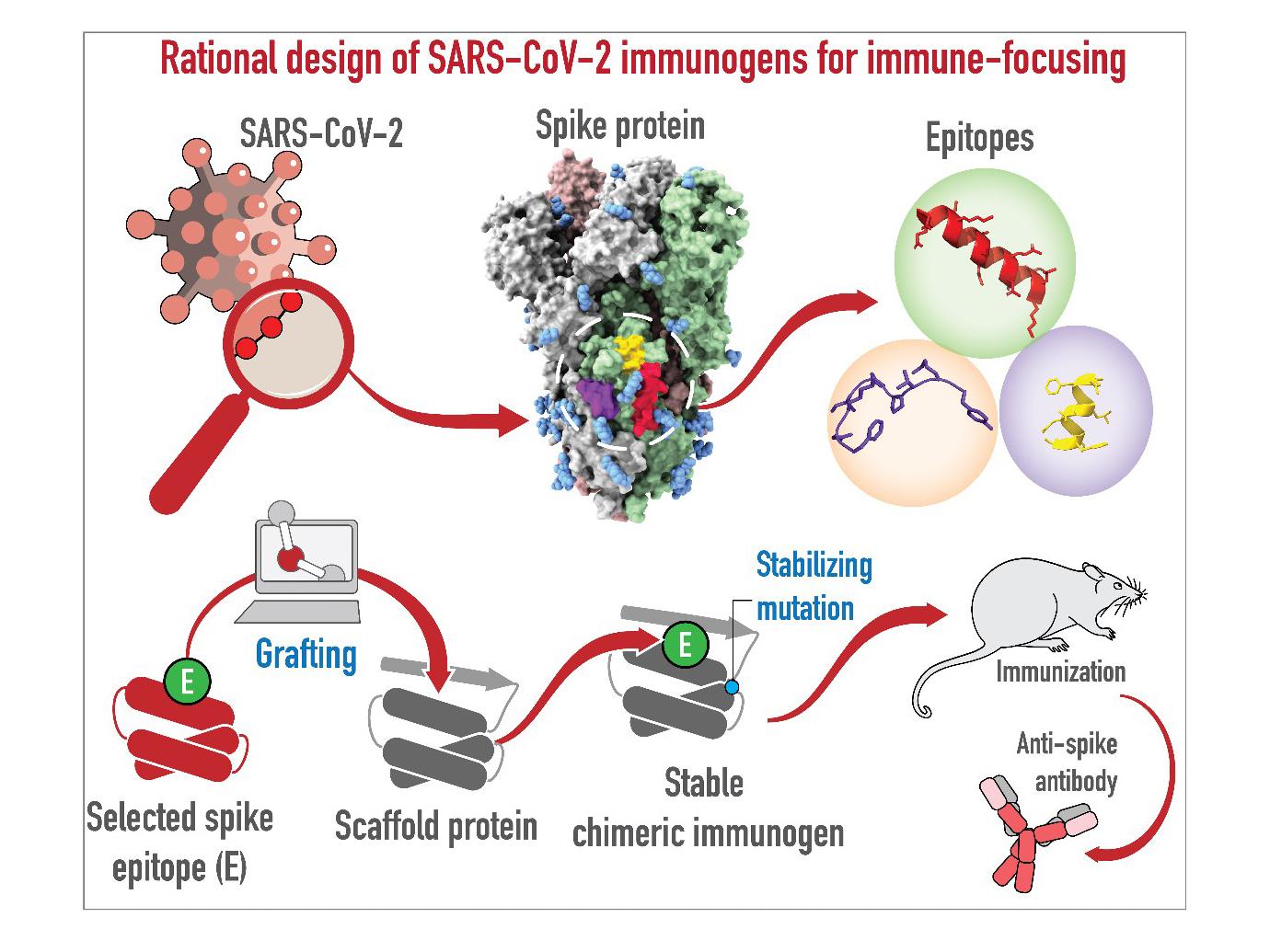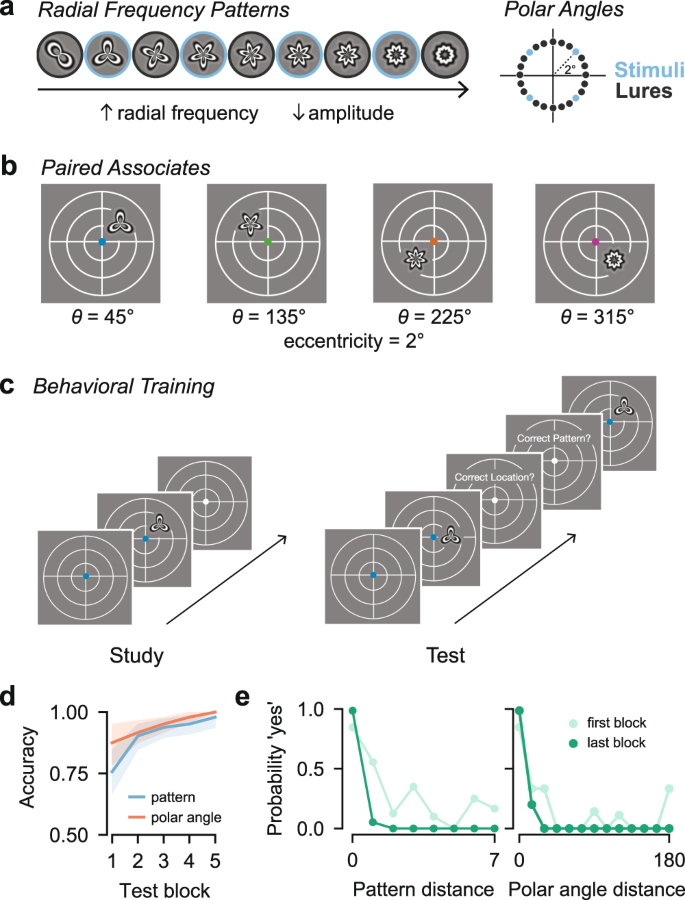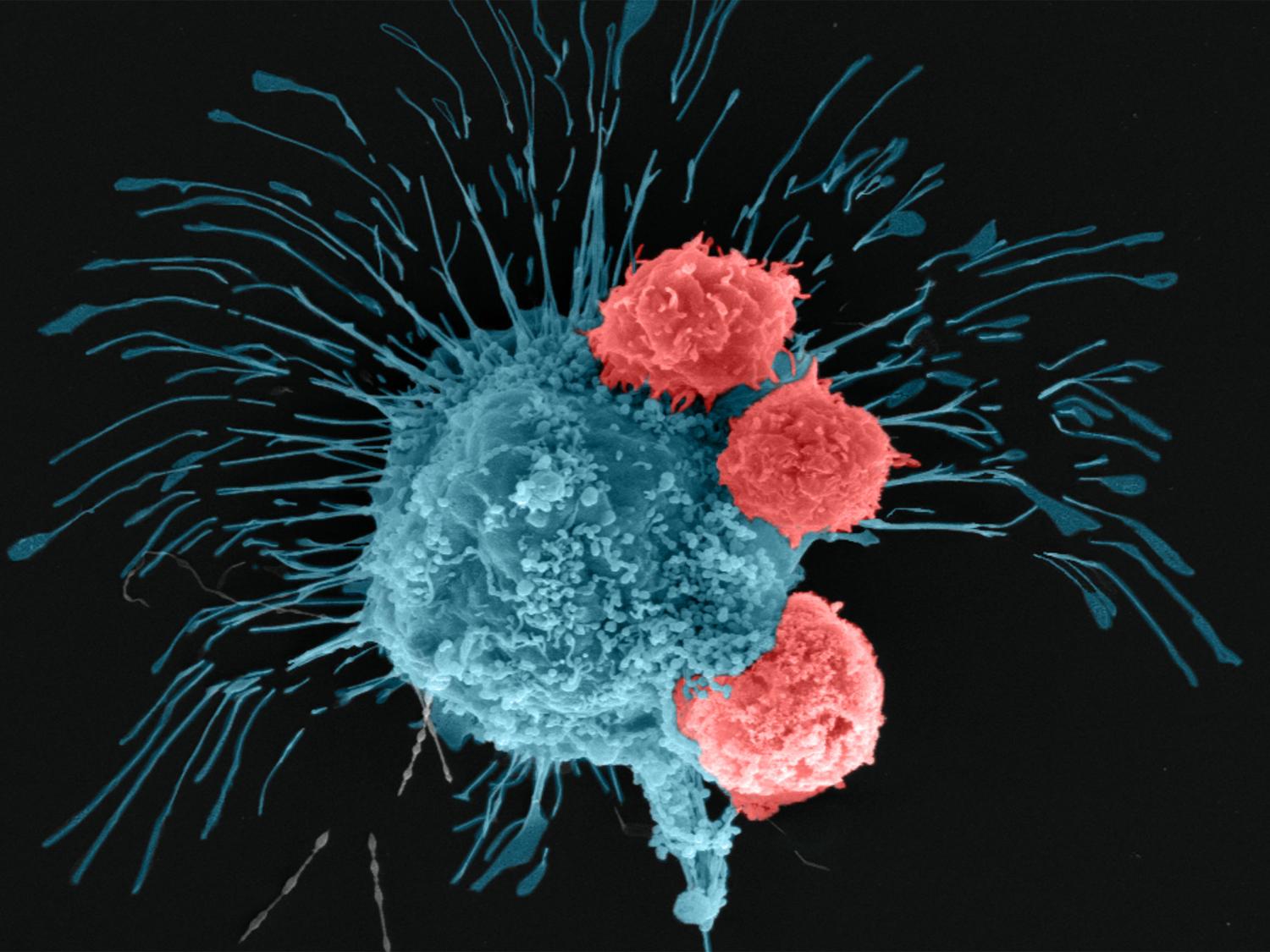計算生物学を用いて、SARS-CoV-2スパイクタンパク質の変異の影響を受けにくい箇所を特定 Researchers use computational biology to target areas of SARS-CoV-2 spike protein that are less susceptible to mutations
2022-10-18 ペンシルベニア州立大学(PennState)

Penn State College of Medicine scientists engineered immunogens using areas of SARS-CoV-2’s spike protein that are less susceptible to mutations. These immunogens could someday be used as vaccine candidates in clinical trials. Credit: Penn State College of Medicine / Penn State. Creative Commons
研究チームは、計算生物学を用いてスパイクタンパク質の3つの領域を特定し、この領域は何百万回もの突然変異が起こっても保存されていることを確認して、免疫原を設計した。そして、エピトープと呼ばれるこれらの領域を、溶液中でエピトープに安定性を与えるタンパク質足場にマッチングし、グラフト化(結合)させた。その後、安定化変異を含む様々な設計変更により、免疫原の構造的な最適化が行われた。さらに、コンピューターシミュレーションにより、免疫原の安定性を検証した。
研究チームは、組換え発現法(バクテリアにタンパク質を作る遺伝子の指示を与える手法)を使って、仮想的にデザインされた免疫原を作りました。その後、このタンパク質を精製し、研究室内で仮想のタンパク質とよく一致するように調べた。最終的に、研究者らは4種類の安定した免疫原を開発し、これを用いてマウスを免疫し、SARS-CoV-2に対する抗体を産生させた。それぞれのデザインは、程度の差こそあれ抗体を産生したが、ED2というデザインは強固な免疫反応を示した。
さらに、この抗体がSARS-CoV-2のスパイクタンパク質に結合することを確認した。さらに、ED2免疫原がCOVID-19患者の血清とどの程度結合するかを、独自に開発した特殊な化学的試験で評価した。その結果、COVID-19患者の血清サンプルに含まれる抗体がED2免疫原に結合することがわかり、診断用途にも使用できる可能性があることが示された。
<関連情報>
- https://www.psu.edu/news/research/story/newly-engineered-protein-could-be-used-develop-adaptation-proof-covid-vaccine/
- https://onlinelibrary.wiley.com/doi/10.1002/adfm.202206055
適応性のあるSARS-CoV-2ワクチンの設計 Adaptation-Proof SARS-CoV-2 Vaccine Design
Yashavantha L. Vishweshwaraiah,Brianna Hnath,Brendan Rackley,Jian Wang,Abhinay Gontu,Morgan Chandler,Kirill A. Afonin,Suresh V. Kuchipudi,Neil Christensen,Neela H. Yennawar,Nikolay V. Dokholyan
Advanced Functional Materials Published: 03 October 2022
DOI:https://doi.org/10.1002/adfm.202206055
Abstract
Severe acute respiratory syndrome coronavirus 2 (SARS-CoV-2) surface spike glycoprotein—a major antibody target—is critical for virus entry via engagement of human angiotensin-converting enzyme 2 (ACE2) receptor. Despite successes with existing vaccines and therapies that primarily target the receptor binding domain (RBD) of the spike protein, the susceptibility of RBD to mutations provides escape routes for the SARS-CoV-2 from neutralizing antibodies. On the other hand, structural conservation in the spike protein can be targeted to reduce escape mutations and achieve broad protection. Here, candidate stable immunogens are designed that mimic surface features of selected conserved regions of spike protein through “epitope grafting,” in which the target epitope topology is presented on diverse heterologous scaffolds that can structurally accommodate the spike epitopes. Structural characterization of the epitope-scaffolds showed stark agreement with computational models and target epitopes. The sera from mice immunized with engineered designs display epitope-scaffolds and spike binding activity. The utility of the designed epitope-scaffolds in diagnostic applications is also demonstrated. Taken all together, this study provides an important methodology for targeting the conserved, non-RBD structural motifs of spike protein for SARS-CoV-2 epitope vaccine design and demonstrates the potential utility of “epitope grafting” in rational vaccine design.


